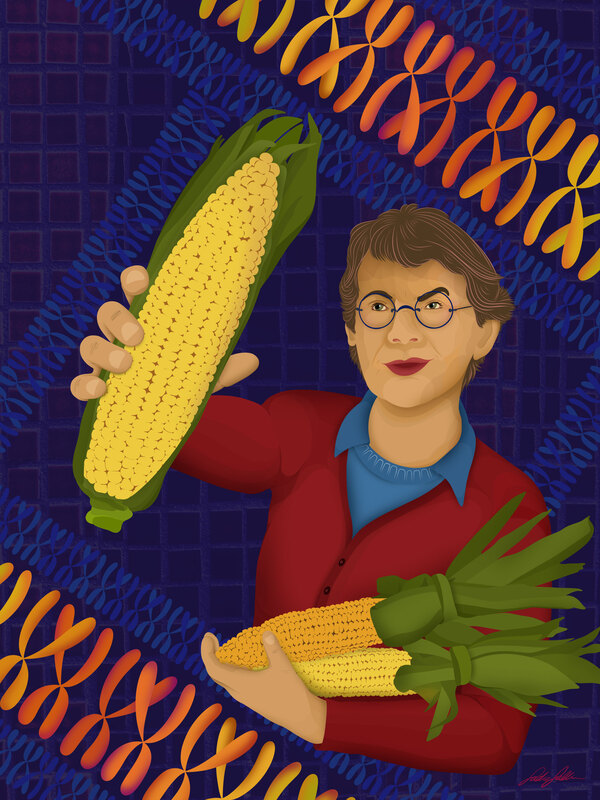|
Barbara McClintock (1902-1992)
Hartford, Connecticut, USA Digital Illustration, 24" x 32", 2022 Going against her mother’s wishes, McClintock with the help of her father, studied agriculture at Cornell University. As a cytogeneticist, she discovered mobile genetic elements and she won a Nobel Prize in Physiology/Medicine in 1983. She was the first woman to win the Nobel Prize unshared.
In 1920, she studied the chromosomes of maize reproduction. She found that by using genetic recombination by crossing-over the chromosome during meiosis, she could exchange chromosomal information. This was the first genetic map for maize, and it explained why some maize kernels are yellow and some are brown. Continuing her research McClintock later discovered transposition which occurs when a DNA sequence changes its position in a genome, sometimes causing mutations in the cell’s identity. This discovery led her to understand how genetic information changes between maize plants. McClintock’s name would be left out of many publications, but her discovery of mobile genetic elements and gene mapping significantly contributed to our understanding of plants. |
Proudly powered by Weebly
